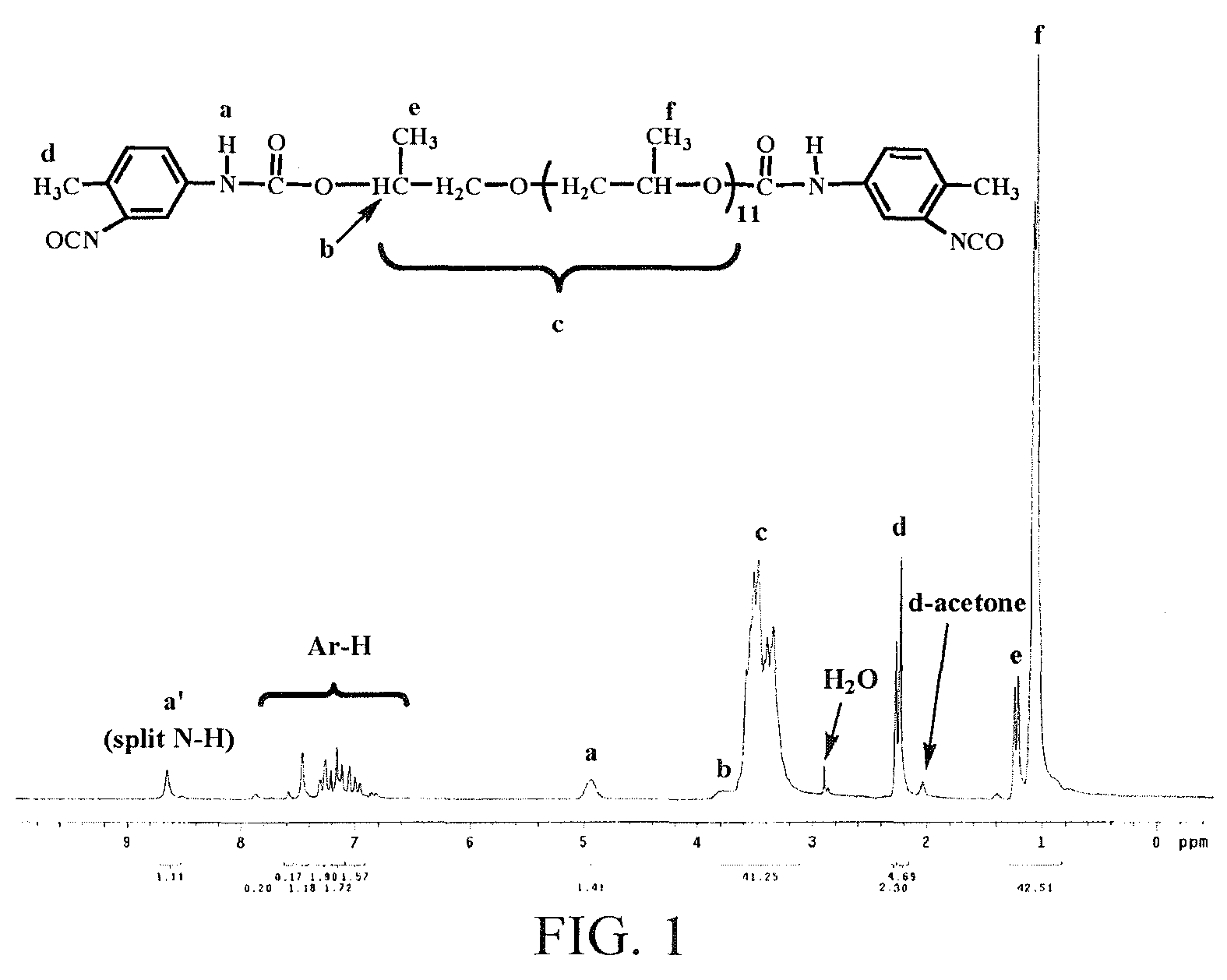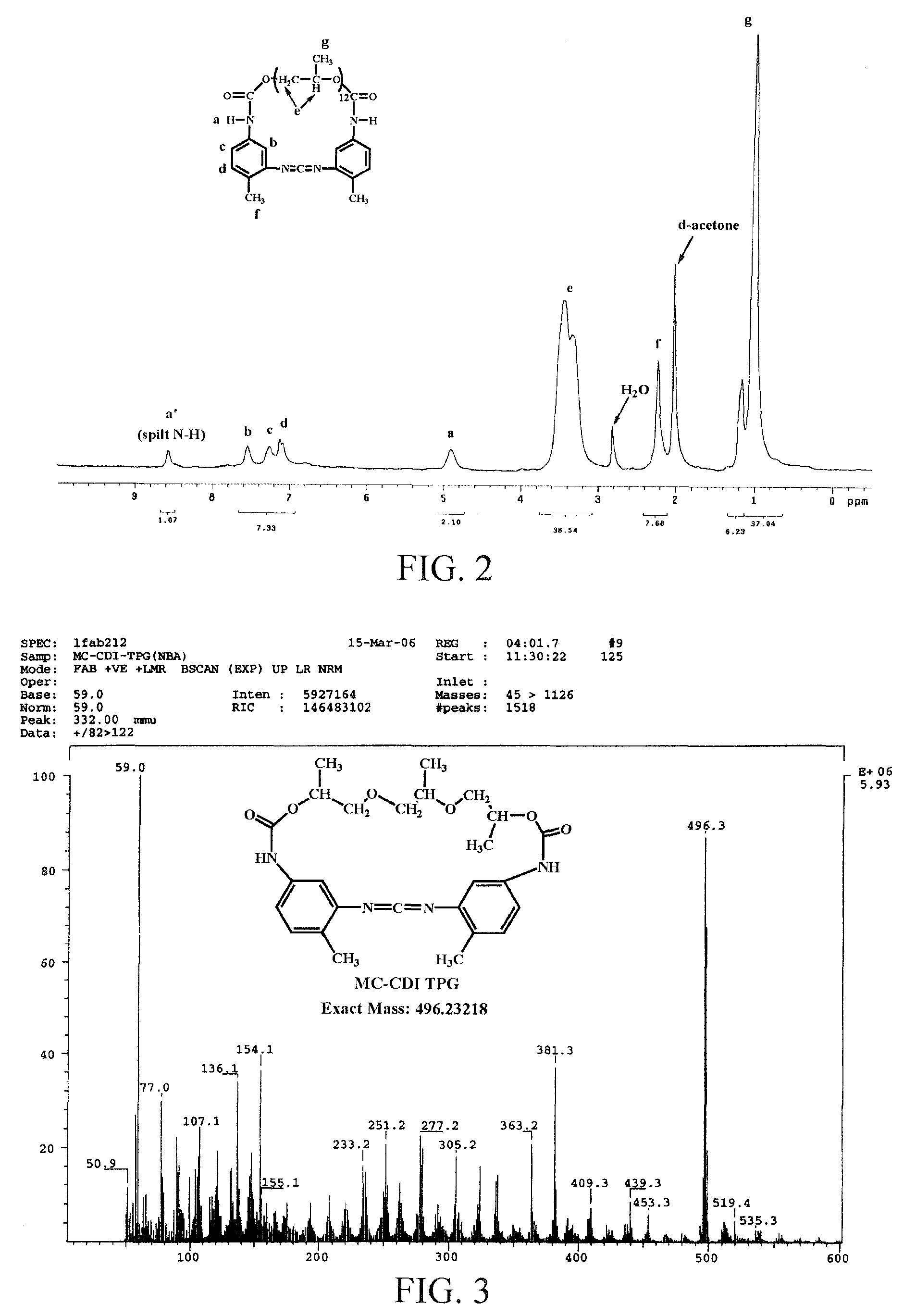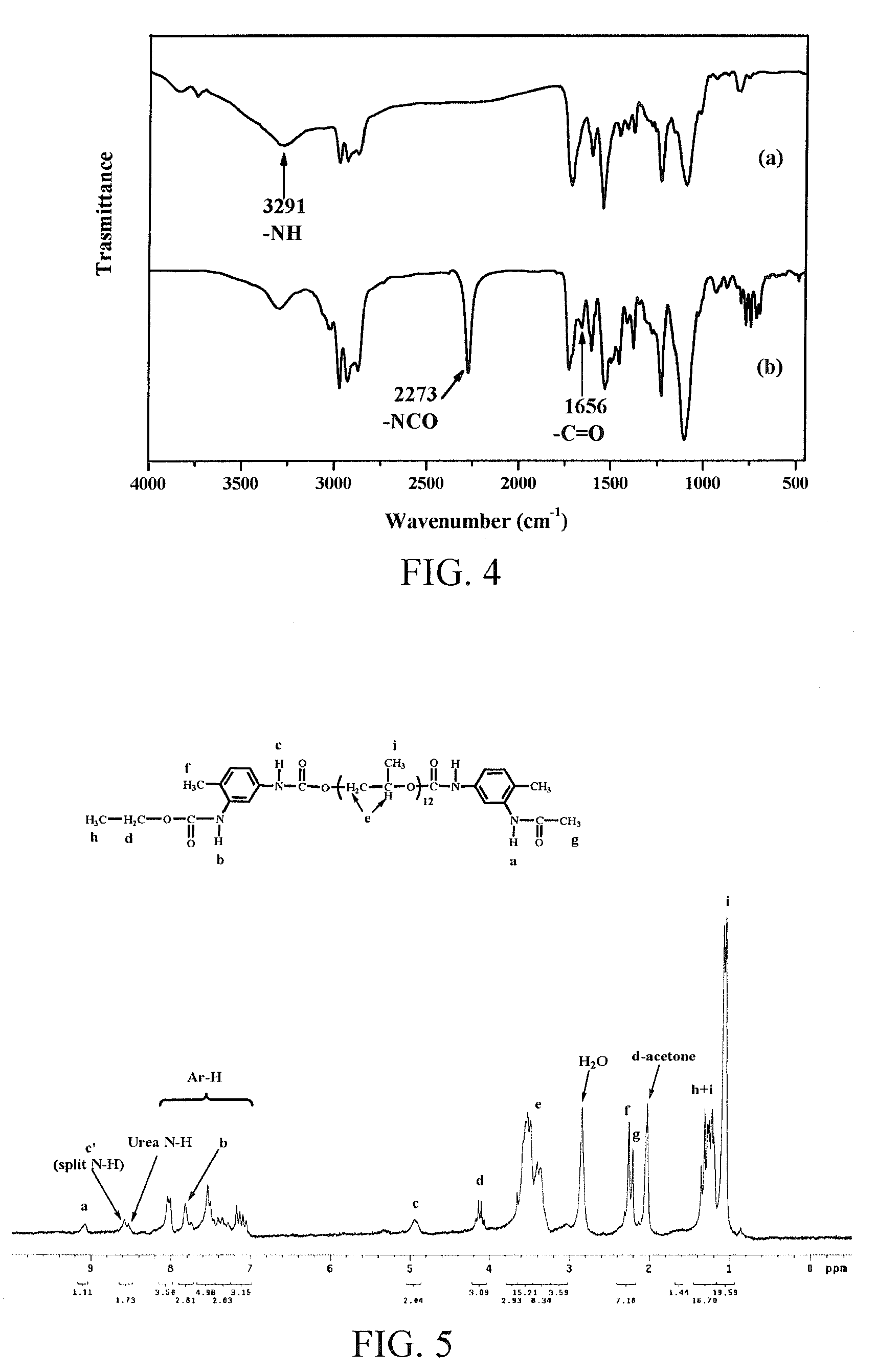Macrocyclic carbodiimides (MC-CDI) and their derivatives, syntheses and applications of the same
a technology of macrocyclic carbodiimide and its derivative, which is applied in the field of macrocyclic carbodiimide and a process for synthesizing the same, can solve the problems of high energy consumption of production mode, high cost of initial raw materials, and inability to successfully synthesize cycloaromatic cdi, so as to prevent the hydrolysis and degradation of polymeric materials, and prevent the formation of organic polymeric materials. , the effect of efficien
- Summary
- Abstract
- Description
- Claims
- Application Information
AI Technical Summary
Benefits of technology
Problems solved by technology
Method used
Image
Examples
example 1
Synthesis of Narrow MW Dispersed Prepolymer Containing Isocyanate Functional Group in the Terminal
[0241]In a 250 ml three-necked flask, 0.02 mol PPG having different MW and 0.042 mol 2,4-TDI were added. Under a nitrogen system, a reaction was conducted under the reaction controlling conditions as shown in Table 1. When the reaction was completed, all of the products were transparent colorless liquids (see Scheme 4).
[0242]
TABLE 1Optimal reaction controlling conditions for synthesizing the prepolymer of2,4-TDI and PPGPoly(propyleneSampleglycol) usedReaction controlling conditionsnumber(PPG)Temperature(° C.)Reaction time (min)T2P192TPG4550T2P4004005040T2P7007005050T2P20002000 65, 7030 (65° C.),15 (70° C.)
[0243]Exemplified by the isocyanate prepolymer prepared from PPG700 and 2,4-TDI, the 1H-NMR spectrogram was shown in FIG. 1.
example 2
Preparation of MC-CDI
[0244]Each of the prepolymers (T2Pm) having different MWs from Example 1 was diluted by directly pouring a large amount of solvent (1500 ml toluene, conc.=0.013 mol / L) into the reactor. After adding DMPO, a cyclization reaction was conducted by heating to 90° C. The cyclization reaction was FTIR-monitored. When the characteristic peak on FTIR completely transformed from NCO (IR=2269 cm−1) to CDI (IR=2134 cm−1), the reaction was stopped. Subsequently, the reaction solution was concentrated, and dried under reduced pressure at 40° C. to 50° C., to obtain a crude product MC-CDI-T2Pm. (see Scheme 4).
[0245]The crude product MC-CDI-T2Pm was purified by liquid column chromatography on silica gel (60-230 micron) by using ethyl acetate (EAc) or ethyl acetate (EAc) / n-hexane in a volume ratio of 9:1, to obtain a solution of target product MC-CDI in EAc. After being concentrated and dried under reduced pressure at 40° C. to 50° C., the purified MC-CDI-T2Pm was obtained. The...
example 3
Synthesis of MC-ACU
[0251]In a 100 ml three-necked flask, the purified MC-CDI-T2Pm (9.3×10−4 mol) with various PPG chain lengths from Example 2, and excessive acetic acid (AcA) (9.3×10−3 mol, 0.56 g) were added, and 20 ml toluene was added finally. The mixture reacted at normal temperature, and the reaction was monitored by FTIR and TLC. When the CDI characteristic peak (IR=2134 cm−1) on FTIR completely disappeared, the reaction was completed (8 hours). The resultant product was dehydrated by adding anhydrous MgSO4, and filtered, and then the solvent was removed, to give a product with a yield of greater than 98% (see Scheme 4).
PUM
| Property | Measurement | Unit |
|---|---|---|
| temperature | aaaaa | aaaaa |
| temperature | aaaaa | aaaaa |
| temperature | aaaaa | aaaaa |
Abstract
Description
Claims
Application Information
 Login to View More
Login to View More - R&D
- Intellectual Property
- Life Sciences
- Materials
- Tech Scout
- Unparalleled Data Quality
- Higher Quality Content
- 60% Fewer Hallucinations
Browse by: Latest US Patents, China's latest patents, Technical Efficacy Thesaurus, Application Domain, Technology Topic, Popular Technical Reports.
© 2025 PatSnap. All rights reserved.Legal|Privacy policy|Modern Slavery Act Transparency Statement|Sitemap|About US| Contact US: help@patsnap.com



